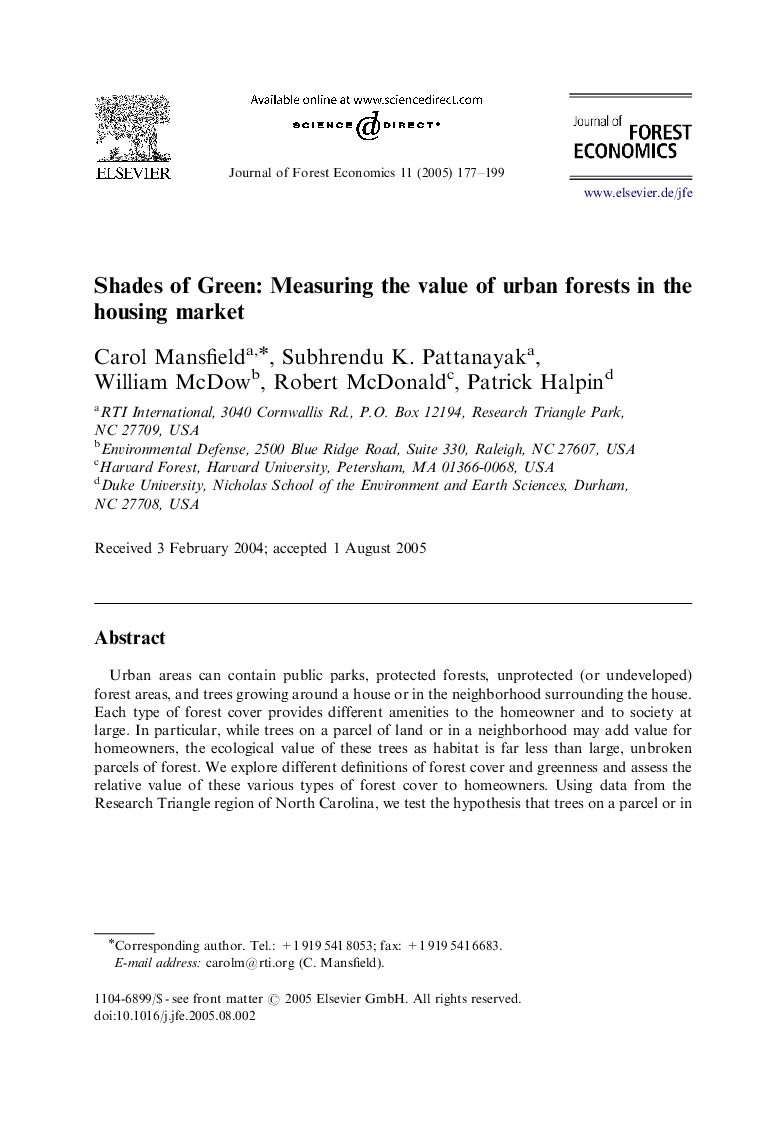| Article ID | Journal | Published Year | Pages | File Type |
|---|---|---|---|---|
| 10251404 | Journal of Forest Economics | 2005 | 23 Pages |
Abstract
Urban areas can contain public parks, protected forests, unprotected (or undeveloped) forest areas, and trees growing around a house or in the neighborhood surrounding the house. Each type of forest cover provides different amenities to the homeowner and to society at large. In particular, while trees on a parcel of land or in a neighborhood may add value for homeowners, the ecological value of these trees as habitat is far less than large, unbroken parcels of forest. We explore different definitions of forest cover and greenness and assess the relative value of these various types of forest cover to homeowners. Using data from the Research Triangle region of North Carolina, we test the hypothesis that trees on a parcel or in the neighborhood around that parcel are substitutes for living near large blocks of forest. The findings have implications for land-use planning efforts and habitat conservation in particular.
Related Topics
Life Sciences
Agricultural and Biological Sciences
Agronomy and Crop Science
Authors
Carol Mansfield, Subhrendu K. Pattanayak, William McDow, Robert McDonald, Patrick Halpin,
